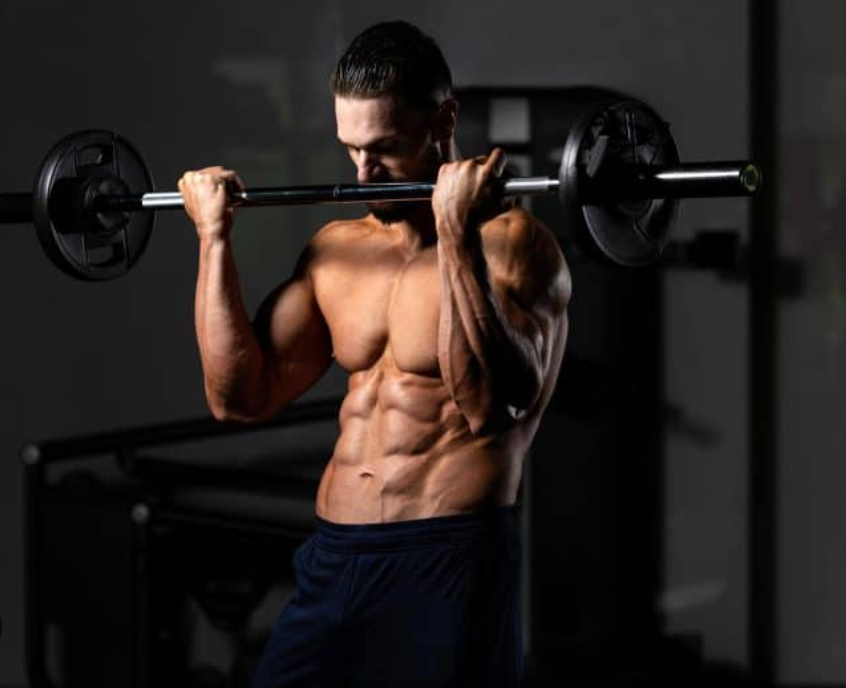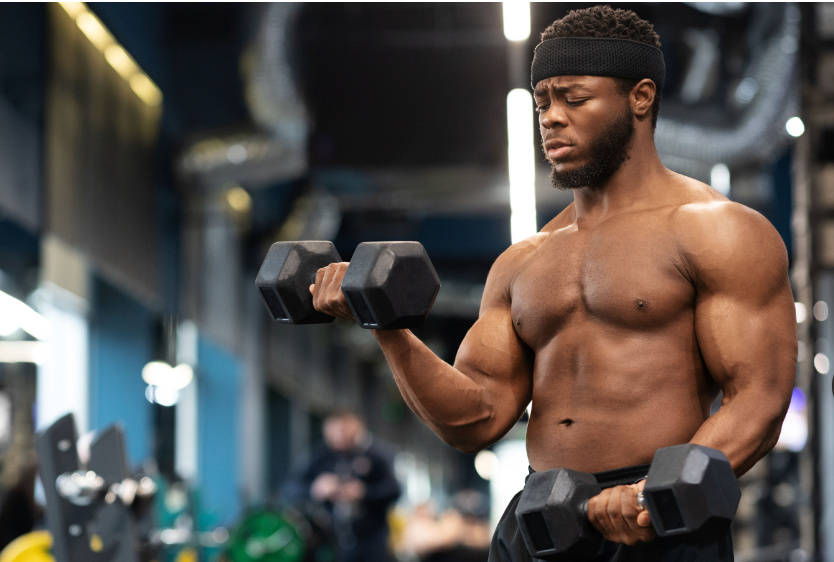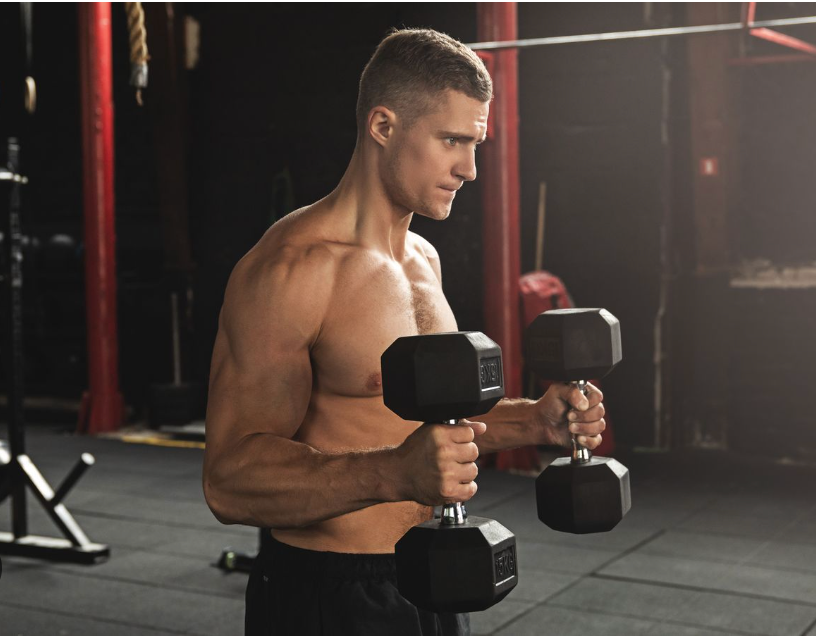
In the world of fitness, having well-defined biceps is often seen as a symbol of strength and power. Achieving bigger biceps requires a combination of targeted exercises, proper nutrition, and a solid workout plan. If you’re looking to build bigger biceps, look no further – we’ve got you covered with this guide.
Understanding Biceps Anatomy
To effectively train your biceps, it’s essential to understand the basic anatomy of the muscle. The biceps brachii, commonly known as the biceps, is a two-headed muscle located on the front part of the upper arm. The two heads are:

- Long Head: This head runs along the outside of the upper arm and contributes to the bicep’s peak when flexed.
- Short Head: This head is located on the inside of the upper arm and helps give the biceps its overall thickness.
In addition to the biceps brachii, the brachialis muscle, located underneath the biceps, plays a significant role in the overall appearance and size of the upper arm. Effective biceps training should target all these muscles for balanced growth and strength.
Key Principles for Biceps Growth
Before diving into specific exercises and workout plans, it’s important to understand the key principles that drive muscle growth, particularly in the biceps:
- Progressive Overload: Continuously challenging your muscles by gradually increasing the weight, reps, or intensity of your exercises is crucial for growth.
- Proper Form: Using correct technique ensures that the target muscles are being effectively worked and helps prevent injury.
- Mind-Muscle Connection: Focusing on the contraction and stretch of the biceps during exercises can enhance muscle activation and growth.
- Rest and Recovery: Muscles grow during rest, not during the workout. Allow sufficient recovery time between biceps workouts.
- Nutrition: Consuming adequate protein and overall calories supports muscle repair and growth.
Effective Biceps Exercises
A variety of exercises can effectively target the biceps, each offering unique benefits. Here are some of the most effective biceps exercises to include in your workout routine:
1. Barbell Curl

The barbell curl is a classic and highly effective exercise for building biceps mass and strength.
How to Perform:
- Stand up straight holding a barbell with an underhand grip (palms facing up).
- Keep your elbows close to your torso and curl the barbell while contracting your biceps.
- Continue to raise the bar until your biceps are fully contracted and the bar is at shoulder level.
- Slowly lower the bar back to the starting position.
2. Dumbbell Curl

Dumbbell curls allow for a greater range of motion and can help correct muscle imbalances between arms.
How to Perform:
- Stand with a dumbbell in each hand, arms fully extended, and palms facing forward.
- Curl the weights while keeping your upper arms stationary.
- Squeeze your biceps at the top of the movement and then slowly lower the dumbbells back to the starting position.
3. Hammer Curl

Hammer curls target the brachialis muscle, contributing to overall arm thickness.
How to Perform:
- Hold a pair of dumbbells with your palms facing each other (neutral grip).
- Curl the weights while keeping your upper arms stationary.
- Focus on the contraction at the top and then lower the weights slowly.
4. Preacher Curl

The preacher curl isolates the biceps and reduces cheating by preventing body movement.
How to Perform:
- Sit on a preacher’s bench and hold a barbell or dumbbell with an underhand grip.
- Rest your arms on the bench pad, keeping your armpits at the top of the pad.
- Curl the weight upward, squeezing your biceps, and then lower it back to the starting position.
5. Concentration Curl

Concentration curls focus on peak contraction and muscle isolation.
How to Perform:
- Sit on a bench with your legs spread, holding a dumbbell in one hand.
- Rest your upper arm on your inner thigh.
- Curl the weight while keeping your upper arm stationary.
- Squeeze at the top and then lower the weight slowly.
6. Cable Curl

Cable curls provide constant tension on the biceps throughout the movement.
How to Perform:
- Attach a straight bar or rope to a low pulley on a cable machine.
- Hold the attachment with an underhand grip and curl it towards your shoulders.
- Focus on keeping your elbows close to your torso and squeezing your biceps at the top.
7. Chin-Up

Chain-ups are a variation of chin-ups where chains are used to provide variable resistance, increasing the difficulty as you pull up.
How to Perform:
- Attach chains to a pull-up bar, ensuring they are securely fastened.
- Grab the bar with an underhand grip, hands shoulder-width apart.
- Pull yourself up, allowing the chains to add resistance as you ascend.
- Lower yourself back to the starting position with control.
Sample Biceps Workout Plan
Below is a sample biceps workout plan designed to maximize growth and strength. This plan includes a mix of exercises targeting the biceps from different angles and with varying intensities. Aim to perform this workout twice a week, allowing 48-72 hours of rest between sessions.
Workout A: Strength and Mass
- Barbell Curl: 4 sets of 6-8 reps
- Hammer Curl: 3 sets of 8-10 reps
- Preacher Curl: 3 sets of 10-12 reps
- Cable Curl: 3 sets of 12-15 reps
Workout B: Definition and Peak
- Dumbbell Curl: 4 sets of 8-10 reps
- Concentration Curl: 3 sets of 10-12 reps
- Chin-Up: 3 sets to failure
- Chain-Up: 3 sets of 8-10 reps
- Rope Cable Curl: 3 sets of 12-15 reps
Training Tips
- Warm-Up: Begin each workout with a proper warm-up to increase blood flow to the muscles and reduce the risk of injury. Perform 5-10 minutes of light cardio followed by dynamic stretches for the arms.
- Focus on Form: Prioritize proper form over lifting heavier weights. Control the movement, avoid swinging, and fully extend and contract your biceps during each rep.
- Variety: Change up your exercises every 4-6 weeks to keep your muscles challenged and prevent plateaus.
- Mind-Muscle Connection: Concentrate on feeling the biceps work during each exercise. This can improve muscle activation and growth.
- Rest and Recovery: Ensure adequate rest between sets (1-2 minutes) and workouts (48-72 hours) to allow your muscles to recover and grow.
- Nutrition: Consume a balanced diet rich in protein to support muscle repair and growth. Aim for 1.6-2.2 grams of protein per kilogram of body weight per day.
Advanced Techniques for Faster Growth

To accelerate your biceps growth, consider incorporating advanced training techniques into your routine. These methods can help break through plateaus and stimulate further muscle development.
Drop Sets
Drop sets involve performing a set to failure, then immediately reducing the weight and continuing the exercise until failure again. This technique increases the intensity and volume of your workout, promoting greater muscle fatigue and growth.
Example:
- Perform barbell curls with a weight you can lift for 8 reps.
- After reaching failure, reduce the weight by 20-30% and continue for another 8 reps.
- Repeat the process for 2-3 drops.
Supersets
Supersets involve performing two exercises back-to-back with minimal rest in between. This method increases the intensity and can lead to greater muscle pump and hypertrophy.
Example:
- Perform a set of dumbbell curls immediately followed by a set of hammer curls.
- Rest for 1-2 minutes before repeating the superset.
Eccentric Training
Eccentric training focuses on the lowering phase of an exercise, where the muscle lengthens under tension. This phase is crucial for muscle growth and strength.
Example:
- During barbell curls, take 3-4 seconds to lower the bar back to the starting position.
- Emphasize the slow, controlled lowering phase to maximize muscle activation.
Forced Reps
Forced reps involve performing additional reps with the help of a spotter after reaching failure. This technique pushes your muscles beyond their usual limits, promoting greater growth.
Example:
- Perform dumbbell curls until failure.
- Have a spotter assist you in completing 2-3 more reps.
Rest-Pause Sets
Rest-pause sets involve taking short breaks during a set to extend the total number of reps. This technique increases the intensity and volume, leading to greater muscle fatigue and growth.
Example:
- Perform barbell curls for 8 reps.
- Rest for 10-15 seconds, then perform as many additional reps as possible.
- Repeat the rest-pause cycle 2-3 times.
The Importance of Rest and Recovery for Optimal Bicep Gains
Rest and recovery are not mere breaks from training; they are integral components of the muscle-building process. Neglecting rest can lead to overtraining, diminishing returns, and increased injury risk. Intentional recovery practices, including adequate sleep, active recovery days, and proper nutrition, support muscle repair and growth. Embracing rest as a critical element of your training regimen can significantly enhance your bicep development and overall well-being.
The Role of Nutrition in Bicep Muscle Growth

Nutrition plays a pivotal role in muscle development. A diet lacking in essential nutrients can hinder your progress, while a well-balanced intake can significantly enhance it. Protein, the building block of muscle, should be a staple in your diet, alongside carbohydrates for energy and fats for hormonal balance. Hydration and micronutrients also contribute to optimal performance and recovery. Tailoring your nutrition to support your workout goals can be a game-changer in realizing the full potential of your bicep training.
Conclusion: Putting it All Together for the Best Bicep Workout
Achieving the best bicep workout entails a holistic approach, encompassing an understanding of anatomy, the application of science-based principles, and a commitment to nutrition and recovery. By avoiding common pitfalls, diversifying your exercises, and strategically incorporating progressive overload, you can optimize your gains. Tracking your progress and adjusting your routine as necessary ensures sustained growth and prevents plateau. Remember, the journey to impressive biceps is not a sprint but a marathon, requiring patience, dedication, and a balanced approach. Armed with these insights, you’re well on your way to maximizing your gains and unveiling the secrets to the best bicep workout.
For personalized guidance and to further refine your approach, click the link for coaching. Together, we can tailor a bicep workout routine that aligns with your unique goals and propels you toward achieving your ideal physique.
